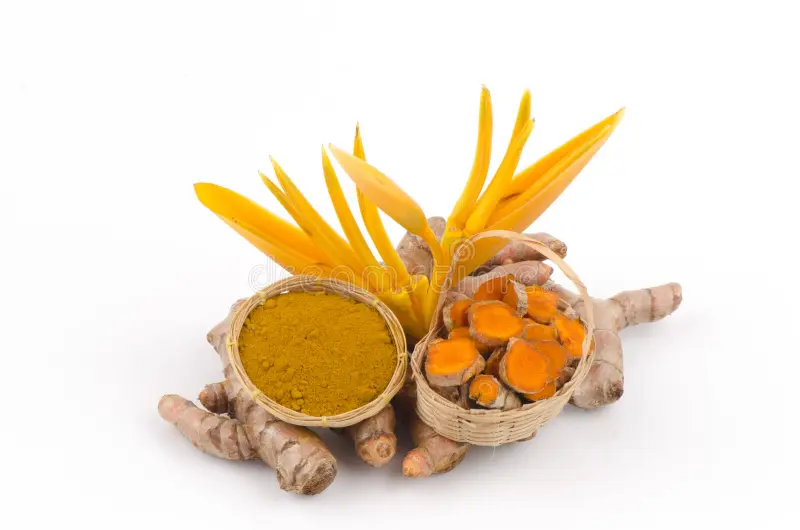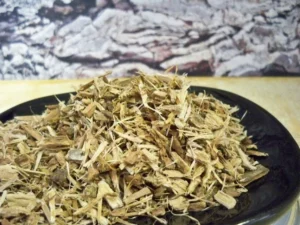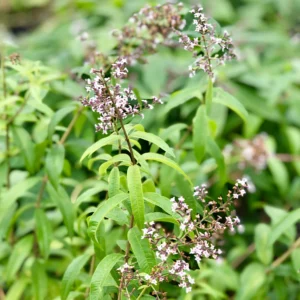Zedoary

Zedoary (Curcuma zedoaria) is a unique herb known for its aromatic rhizome, which is often used in traditional medicine and culinary applications. Native to India and Indonesia, Zedoary is a relative of turmeric and ginger, sharing many of their beneficial properties. The plant features large, lance-shaped leaves and produces pale yellow flowers. The rhizome is the most valued part of the plant, recognized for its sharp, camphor-like aroma and slightly bitter taste.
1. Size:
- Zedoary grows to a height of 3 to 4 feet (90 to 120 cm), with broad leaves that can reach up to 2 feet (60 cm) in length. The plant’s rhizome can grow to about 3 to 4 inches (8 to 10 cm) in length.
2. Color:
- The rhizome is yellowish on the outside and pale white to light yellow on the inside. The leaves are a vibrant green, and the flowers are pale yellow, often tinged with a pinkish hue at the edges.
3. Texture:
- The rhizome of Zedoary has a firm, fibrous texture. When sliced, it reveals a smooth, moist interior with a slightly grainy feel.
4. Fragrance:
- Zedoary emits a sharp, camphor-like aroma, which is more pungent than ginger. The scent is refreshing and invigorating, often used in aromatherapy for its stimulating effects.
5. Uses:
- Zedoary is commonly used in Asian cuisine, particularly in India and Indonesia, where it is added to curries, pickles, and spice blends. It has a slightly bitter, earthy flavor that enhances the taste of various dishes.
- Zedoary is used in traditional medicine for its anti-inflammatory and digestive properties. It is often used to treat gastrointestinal issues, including indigestion, bloating, and loss of appetite.
- The essential oil of Zedoary is used in aromatherapy for its stimulating and invigorating effects. It is believed to help clear the mind, boost energy levels, and improve concentration.
- Zedoary is sometimes used in skincare products for its antimicrobial and anti-inflammatory properties, which can help in treating acne and other skin conditions.
6. Habitat:
- Zedoary thrives in tropical climates and is typically found in India, Indonesia, and other Southeast Asian countries. It prefers well-drained, fertile soil and partial to full sunlight.
7.Cultural and Spiritual Significance:
- Zedoary has been used for centuries in Ayurvedic and traditional Chinese medicine to treat a variety of ailments, including digestive issues and respiratory conditions. It is also considered a powerful blood purifier.
- In some cultures, Zedoary is associated with protection and purification. It is often used in rituals and ceremonies to cleanse negative energies and promote healing.
Spiritual Properties
- Purification and Protection: Zedoary is believed to have powerful purifying properties, making it a common ingredient in spiritual cleanses and protective rituals. It is used to clear away negative energies and promote a sense of well-being.
- Energy and Clarity: The herb is also associated with enhancing mental clarity and boosting energy levels. It is used in meditation practices to help focus the mind and clear away distractions.
Medicinal Properties
- Anti-inflammatory: Zedoary has strong anti-inflammatory properties, making it useful in treating conditions like arthritis, joint pain, and muscle soreness.
- Digestive Aid: The herb is widely recognized for its ability to improve digestion, reduce bloating, and stimulate appetite. It is often used to treat gastrointestinal disorders.
- Antimicrobial: Zedoary exhibits antimicrobial properties, which help in treating infections and promoting overall health.
- Antioxidant: The rhizome contains antioxidants that protect the body from oxidative stress and support overall health.
Allergic Reactions
Zedoary is generally considered safe when used appropriately. However, some individuals may experience allergic reactions or sensitivities.
- Skin Sensitivity: Direct contact with Zedoary may cause skin irritation or rash in sensitive individuals. It is recommended to perform a patch test before using it topically.
- Respiratory Irritation: Inhalation of Zedoary’s strong aroma may cause respiratory irritation or discomfort, particularly in individuals with asthma or other respiratory conditions.
- Digestive Discomfort: Excessive consumption of Zedoary may lead to digestive discomfort, including stomach cramps, nausea, or diarrhea. It’s important to use the herb in moderation.
- Uterine Stimulation: Zedoary should be avoided by pregnant or breastfeeding women due to the potential risk of uterine stimulation, which could lead to complications during pregnancy.
- Dizziness: Some individuals may experience dizziness or lightheadedness after consuming Zedoary, particularly if taken in large amounts. Reducing the dosage may help alleviate this effect.
- Dry Mouth: Zedoary may cause dry mouth in some users. Staying hydrated and consuming the herb in moderation can help manage this side effect.

White Oak Bark
White Oak Bark White Oak Bark, harvested from the White Oak tree (Quercus alba), is a traditional herbal remedy known for its astringent and anti-inflammatory

Echinacea Purpurea Leaf
Echinacea Purpurea Leaf Echinacea Purpurea Leaf is a well-known herb valued for its immune-boosting properties and use in traditional medicine. It is commonly used to

Spiritual Protection Bath
Spiritual Protection Bath This bath ritual is perfect for cleansing and protecting your aura from negative influences. Commonly used in spiritual practices for shielding and

Recipe Template
Hibiscus Flowers The overall appearance of hibiscus flowers is bold and exotic, making them a popular choice for gardens, decorations, and floral arrangements. Their stunning

Spiritual Renewal Bath
Spiritual Renewal Bath A rejuvenating bath to refresh your energy and revitalize your spirit, this blend is perfect for times when you feel spiritually stagnant

Lemon Verbena
Lemon Verbena Lemon Verbena is a perennial herb known for its intensely lemon-scented leaves and slender, graceful growth. It is cherished in both culinary and